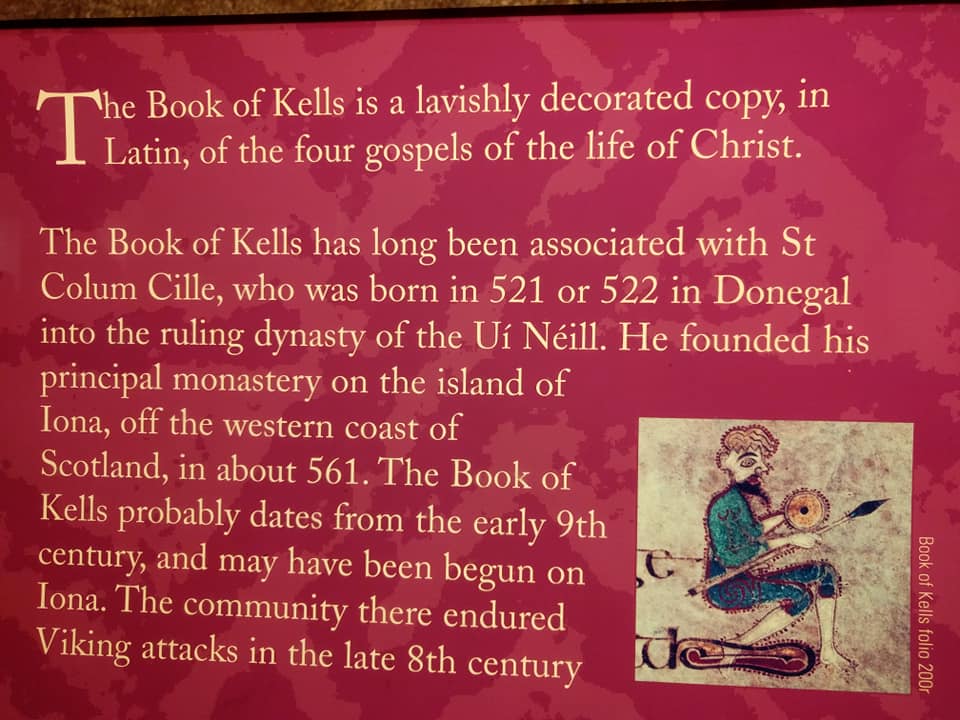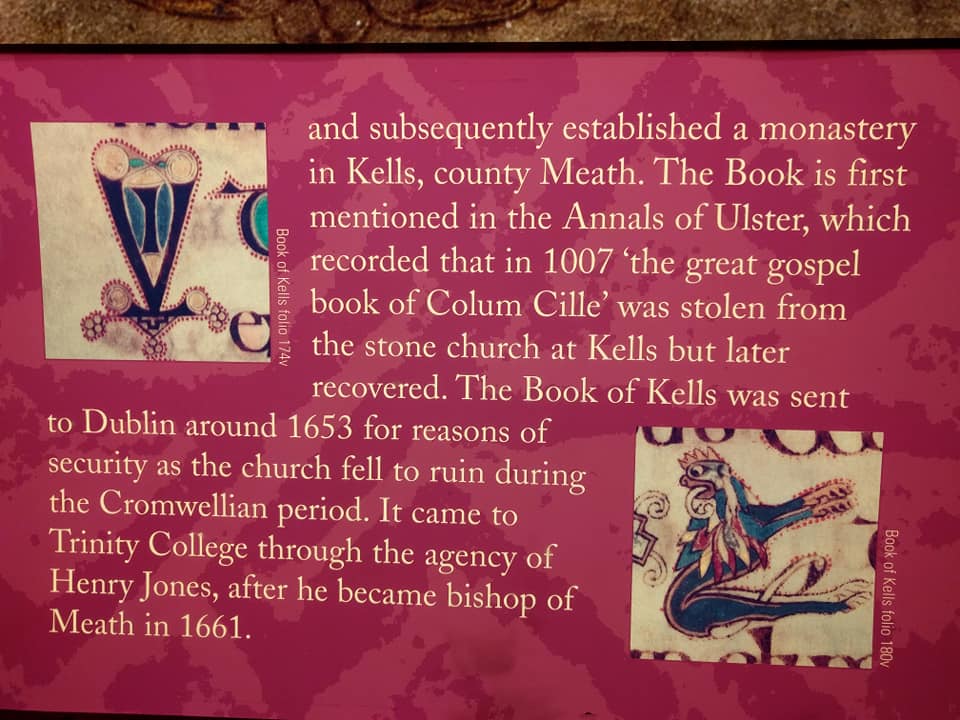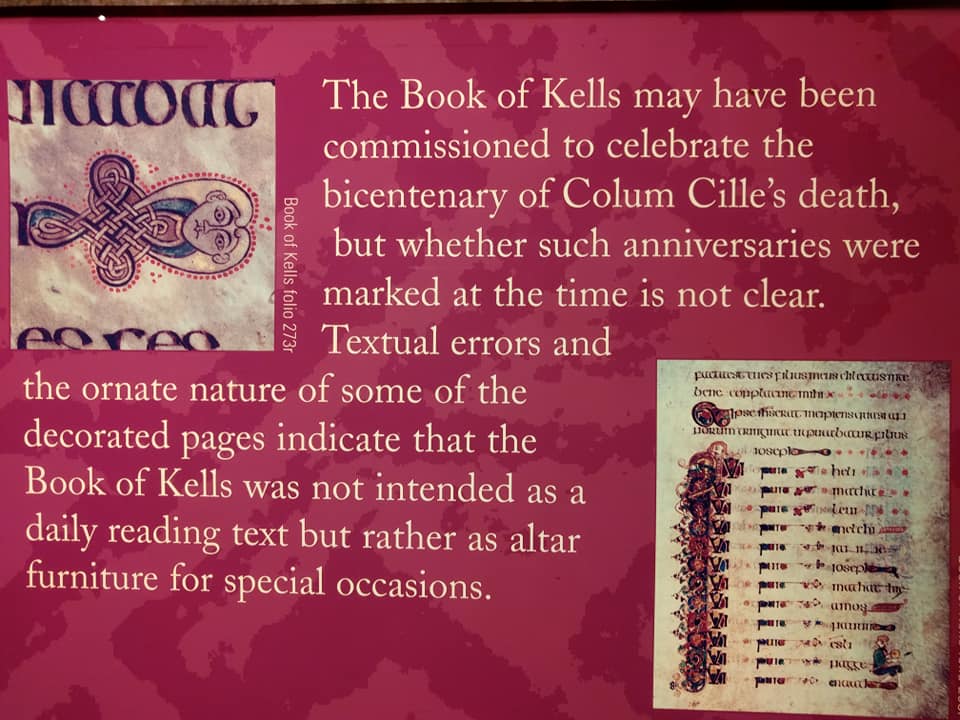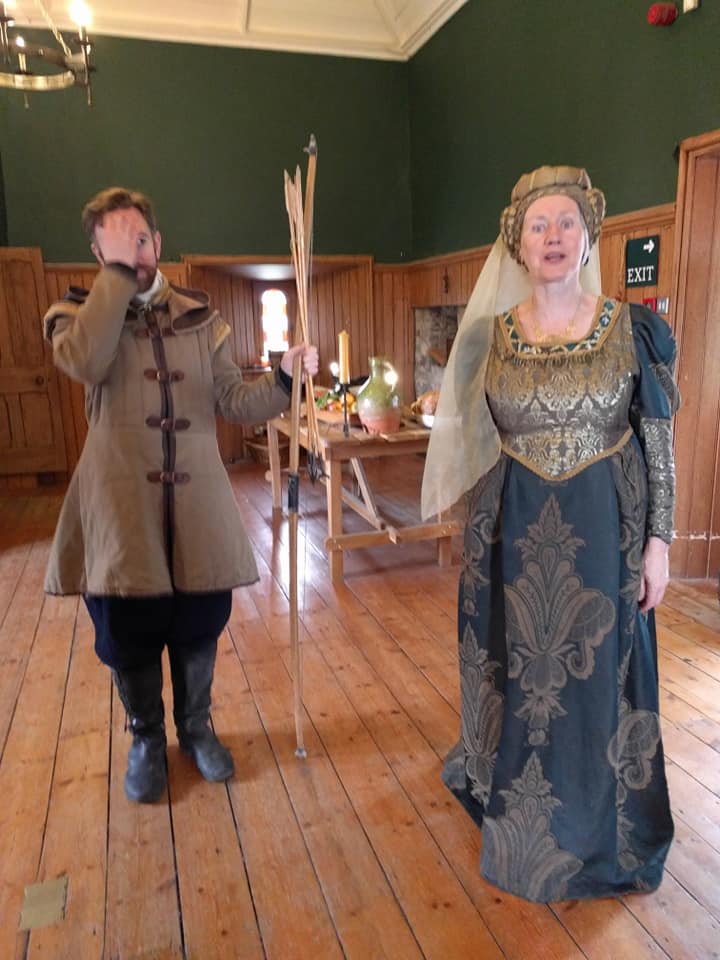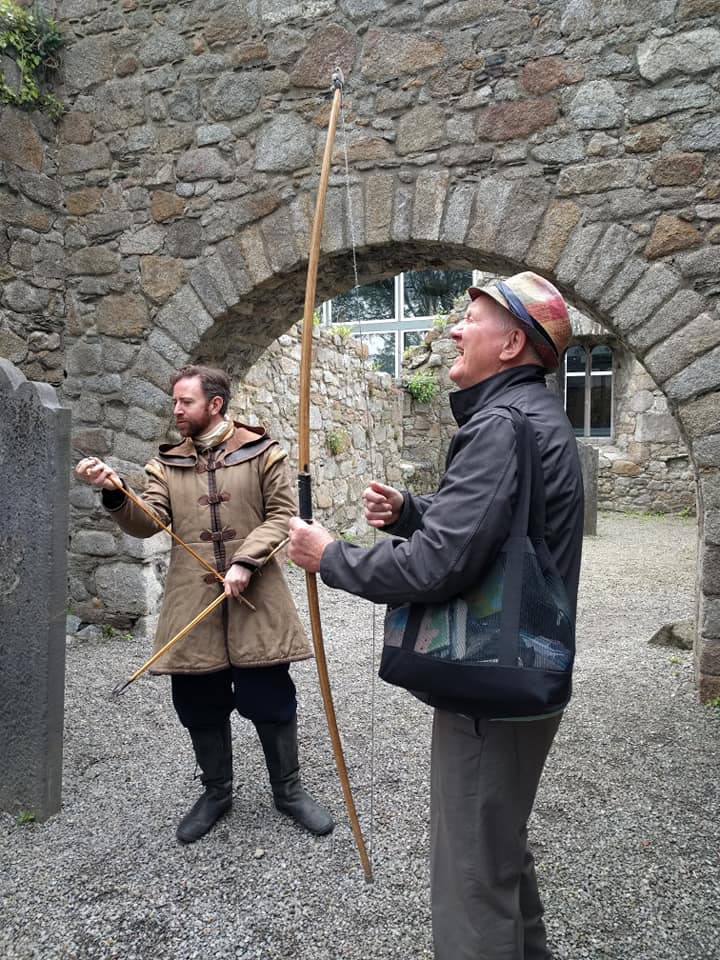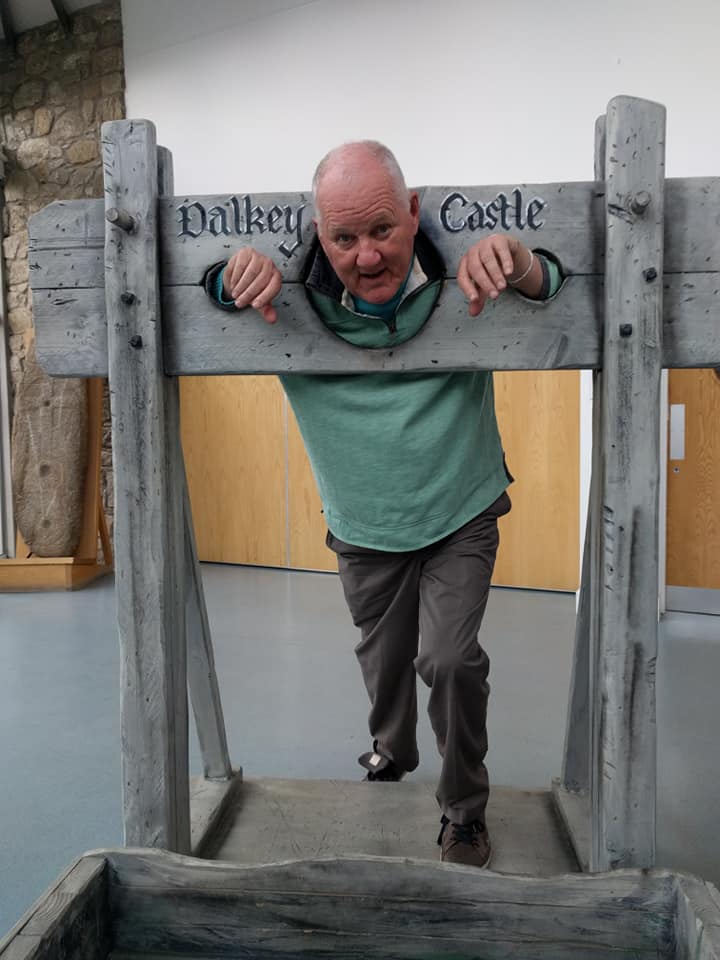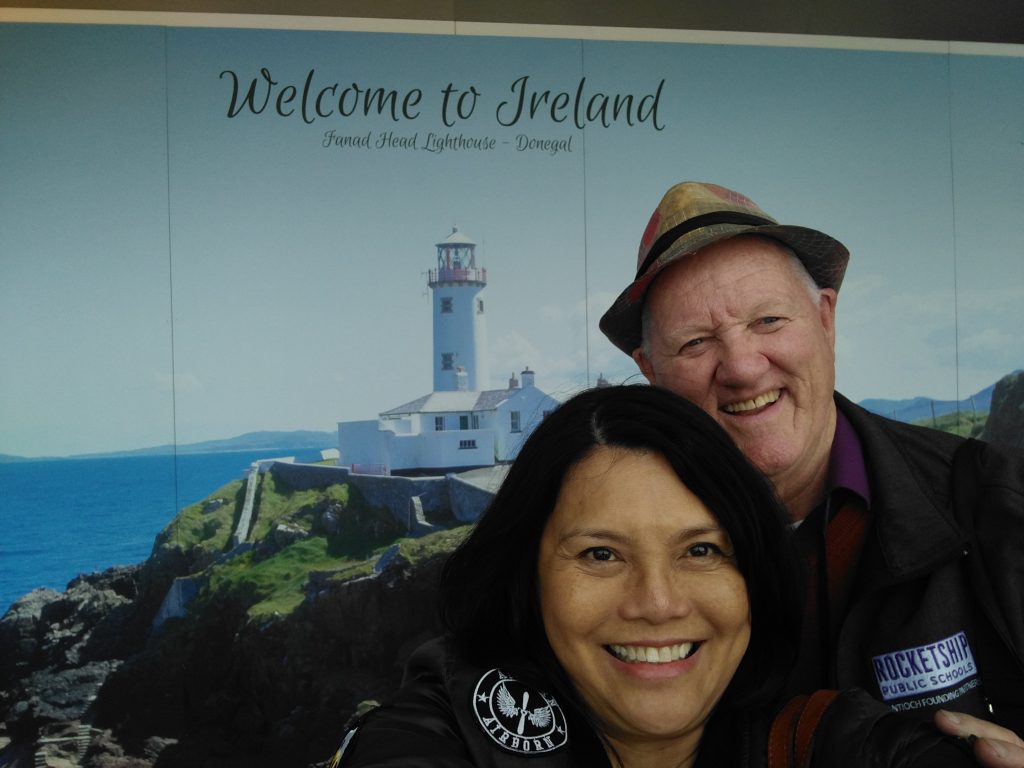
Our plan was to do nothing but relax with beer in hand. Known for its bars, nightlife and hospitality, the city of Dublin seemed the ideal place for this goal; choosing to stay at the Temple Bar District specifically for its promise to dish out the authentic Irish experience.
Ireland, though, is more than just brew and the blaring tune of fiddles, flutes and pipes. Our hearts were captured by a Celtic mood that unmasks a long history of human struggle and resilience.
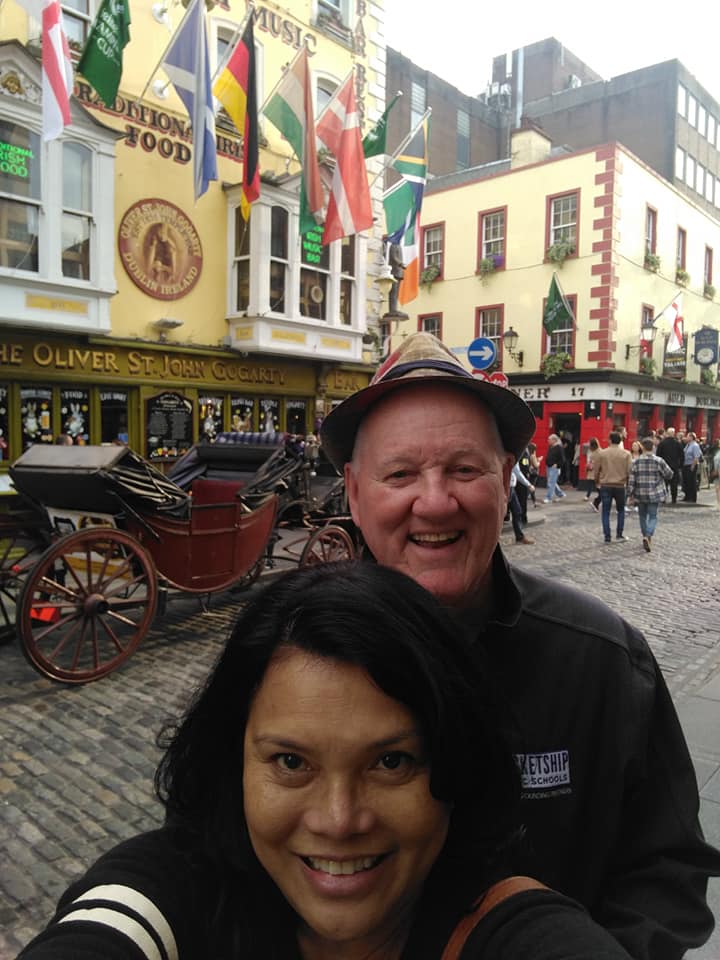
—–at the Oliver St. John Gogarty’s—-
In the midst of the city’s bustle is the bronze statue of Molly Malone, a busty young woman in a low cut dress. The polished bronze glow of its bosom hints to its popular appeal to be “handsy” with her best features.
Molly is the depiction of a fictional figure in a song about a fishmonger in this medieval city who plied the trade passed on by her parents. As in any old folklore, myths color the character as that of a girl who lived in the 17th century; a hawker by day and a prostitute by night. She died of a fever; but her ghost still wheels her barrow through the cobblestones of Dublin touting the freshness of her ware in an echoing wail, “cockles and mussels, alive, alive”.
Molly’s ballad of woes is quintessential to the Irish spirit. From the first Viking attack in the 8th century up to the creation of the Republic of Ireland in the 20th century, a thousand plus years of continuous tyranny and plunder by foreign invaders weave somber tales of poverty, famine and death.
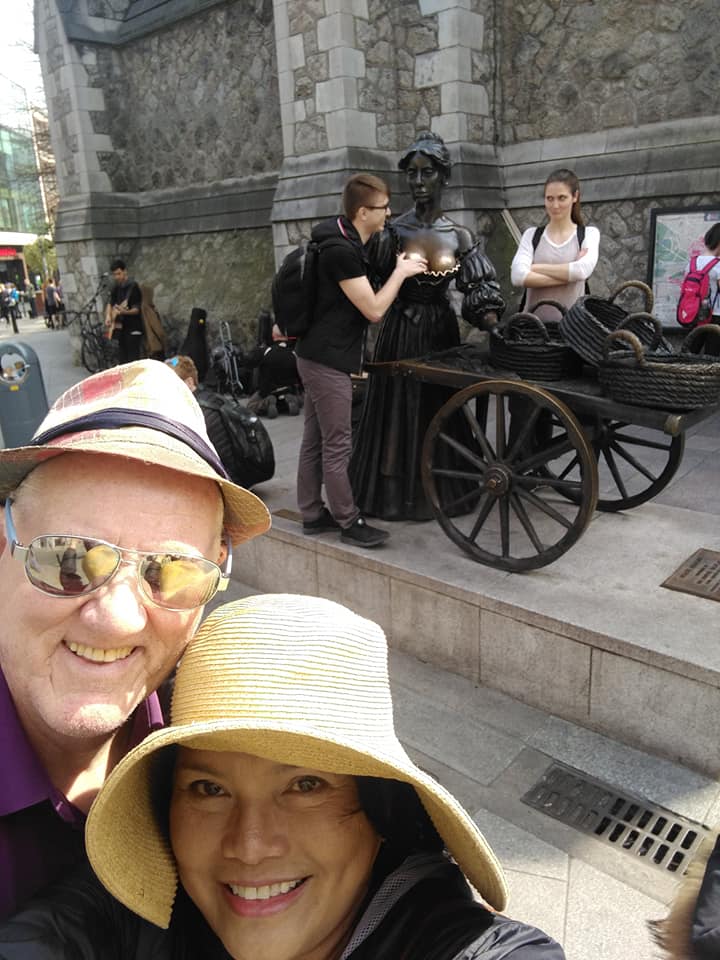
Our delight at the sight of charming whitewashed countryside cottages with thatched roof, cute windows and unique door shifted to horror upon knowing the surreal cruelty of the design’s origin.
In 1169, the English monarch William III imposed a tax on the amount of sunlight coming in from the windows of a property, causing builders to limit window size and number. The fallout from this solution is respiratory problems on residents from poor ventilation of a damp and smoky cottage. Thus, this “window tax” was also dubbed the “typhus tax”.
To curb the tax bill, the half-door was conceived welcoming the gentle breeze that embraced the landscape; making it possible to leave the bottom half close (keeping children in and chickens and other animals out) while leaving the top half open to boost the amount of air and sunlight coming into the cottage from an opening other than a window.
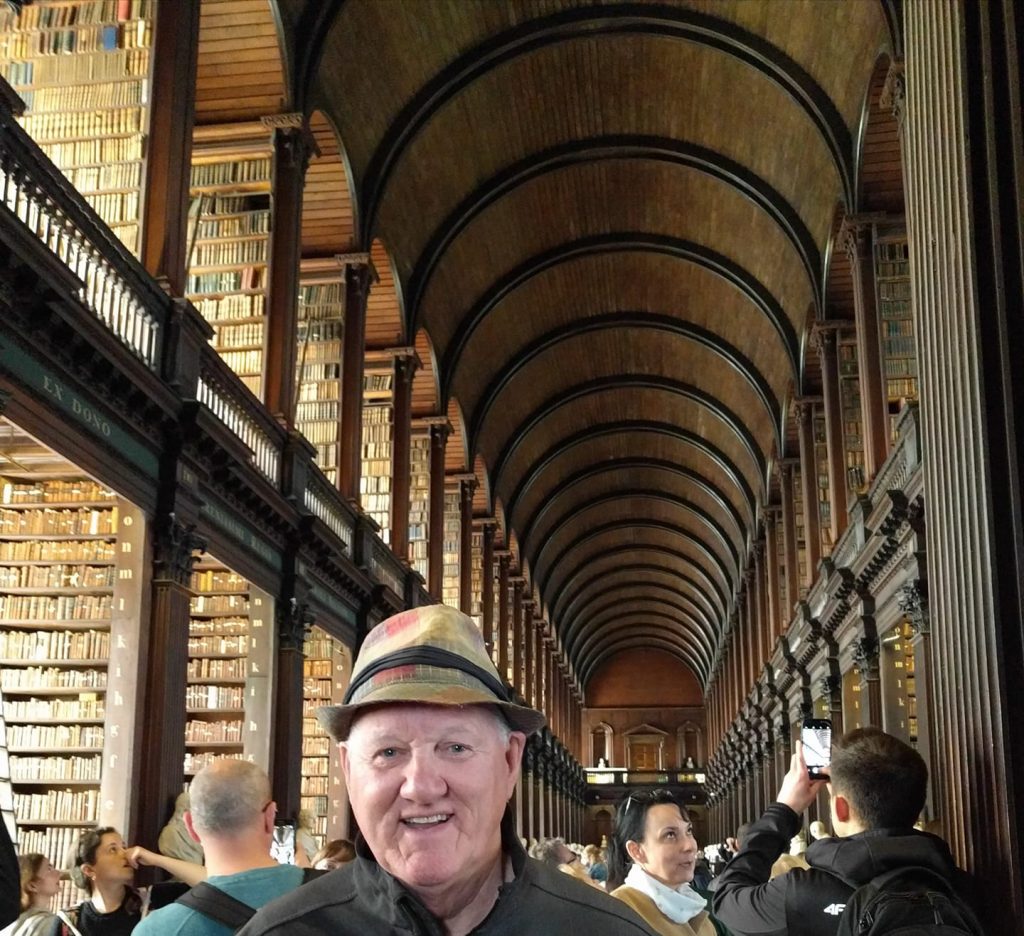
After finally gaining independence from British rule on December 29, 1937, debt and population decline plagued the newly liberated nation of Ireland. It is in this shadow of despair that the statue of Molly was unveiled in 1988 marking the thousand year anniversary of the founding of Dublin as a city. The Dublin Millennium Commission proclaimed June 13 Molly Malone Day endorsing claims for a woman named Mary Malone who died on June 13, 1699.
Half mile away is the impressive facade of Trinity College. Founded by Queen Elizabeth I, it is considered the most prestigious university in Ireland and amongst the most elite in Europe. Here you will find the Long Room, a cache for relics of importance to Ireland and for more than 200K antique leather-bound books.
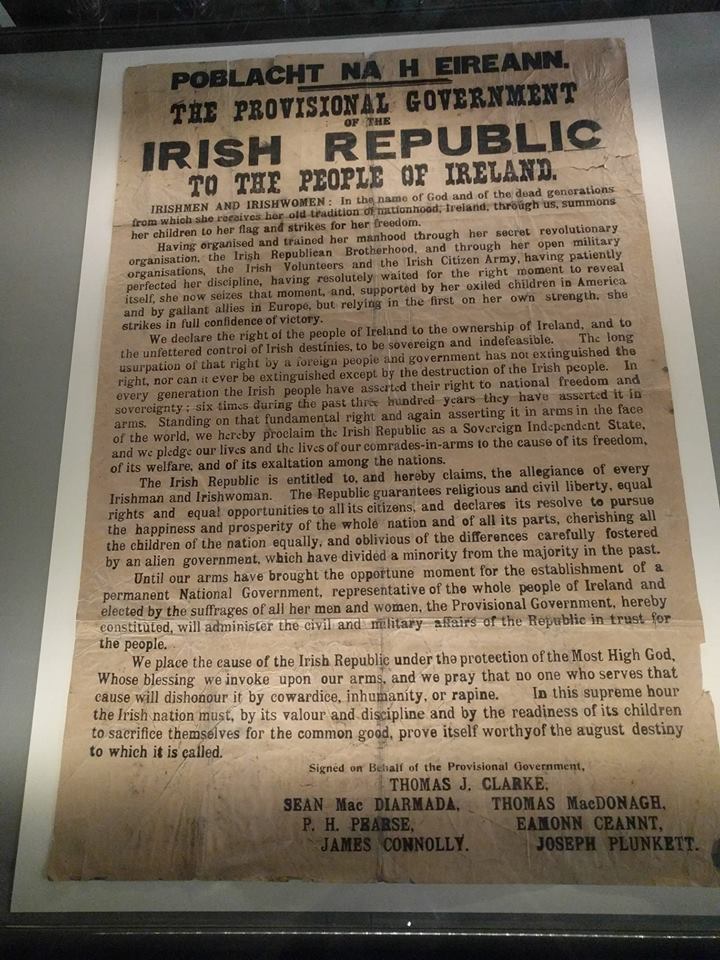
—-Ireland’s Declaration of Independence—–
Displayed in prominence is an original copy of the Declaration of Independence establishing the provisional government of the Irish Republic on Easter 1916.
Celebrated today as the Easter Rising, this document declared the “right of the people of Ireland to the ownership of Ireland”; and summoned all Irishmen and Irishwomen with the support of “her exiled children in America and by gallant allies in Europe” “to strike for her freedom”.
Trinity College also houses the Book of Kells, one of the oldest (800 AD) handwritten copies of the four Gospels and considered Ireland’s greatest national treasure.
Prior to the invention of the printing press by Guttenberg, everything was copied by hand. At the Monastery at Kells, monks reproduced manuscripts onto vellum (calfskins) using quills dipped in dyes. From handwritten analysis, 4 different people transcribed the Book of Kells (one for every Gospel). Each Gospel was prefaced by a colorful illustration flushed in golden hue.
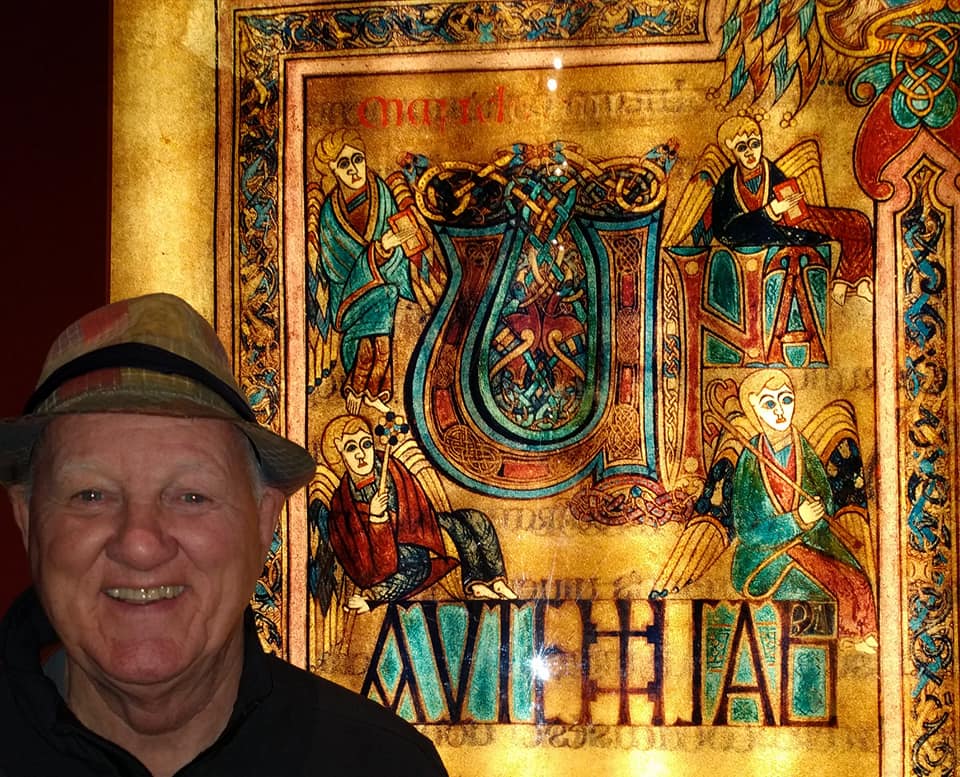

There is so much to see and do in and around Dublin, the capital of the Republic of Ireland, and the DART (Dublin Area Rapid Transit) can bring you to the most fascinating towns at a luxurious pace and affordable price.
We traveled to Malahide, the northernmost town serviced by DART, and were enthralled by this picturesque coastal settlement located by an estuary where the river meets the sea. We soaked in the town’s genteel affluence as we savored the sumptuous buffet at the Grand Hotel.
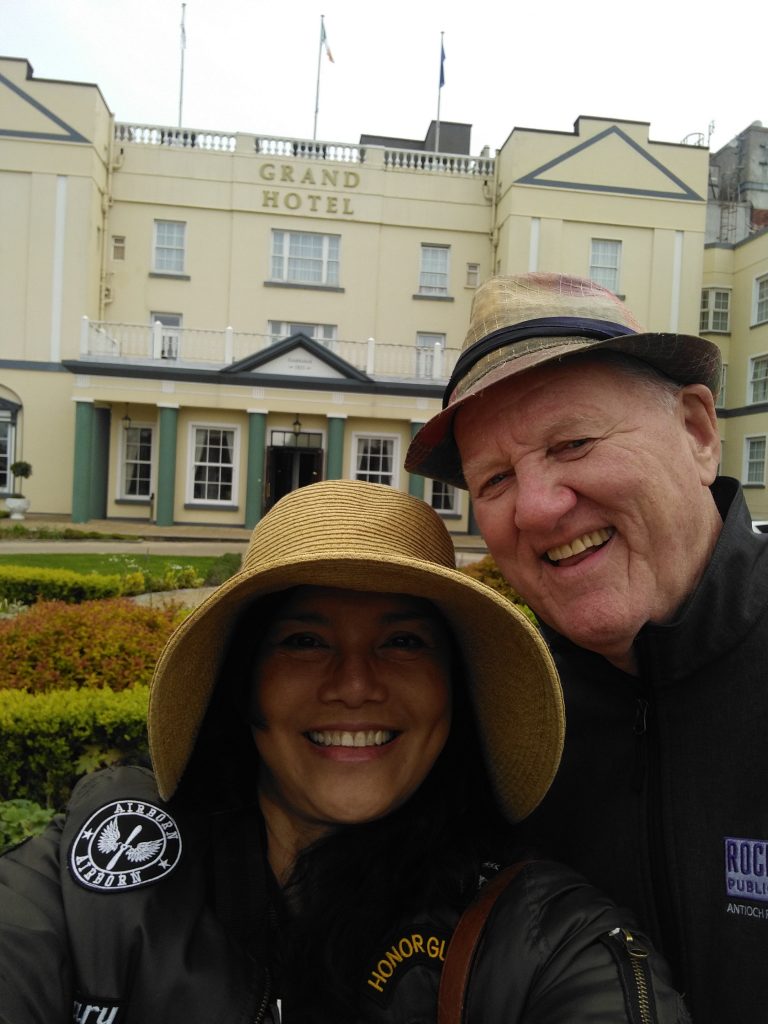
We then toured the Malahide Castle and delighted in its lush beautiful garden that included a butterfly greenhouse and a fairy trail.
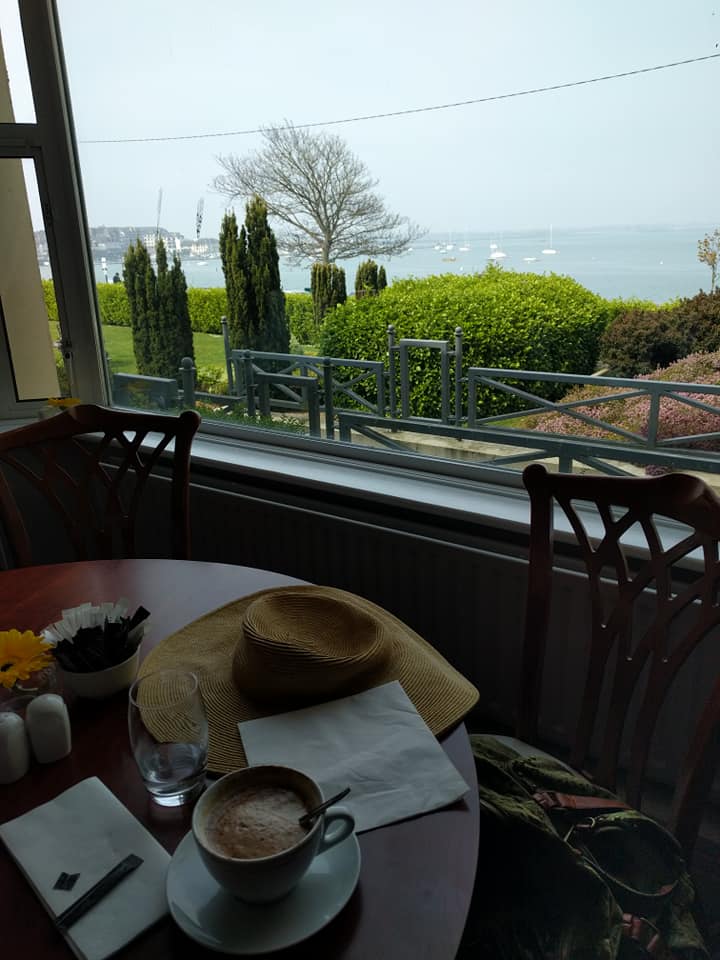
At the castle’s main dining hall, Walter swathed in history as he stood by the chair where Margaret Thatcher sat in discussion across from Bill Clinton during the Treaty that finally ended the fighting between Northern Ireland and the Irish Republic. Thatcher also met with Reagan at the same place years prior.
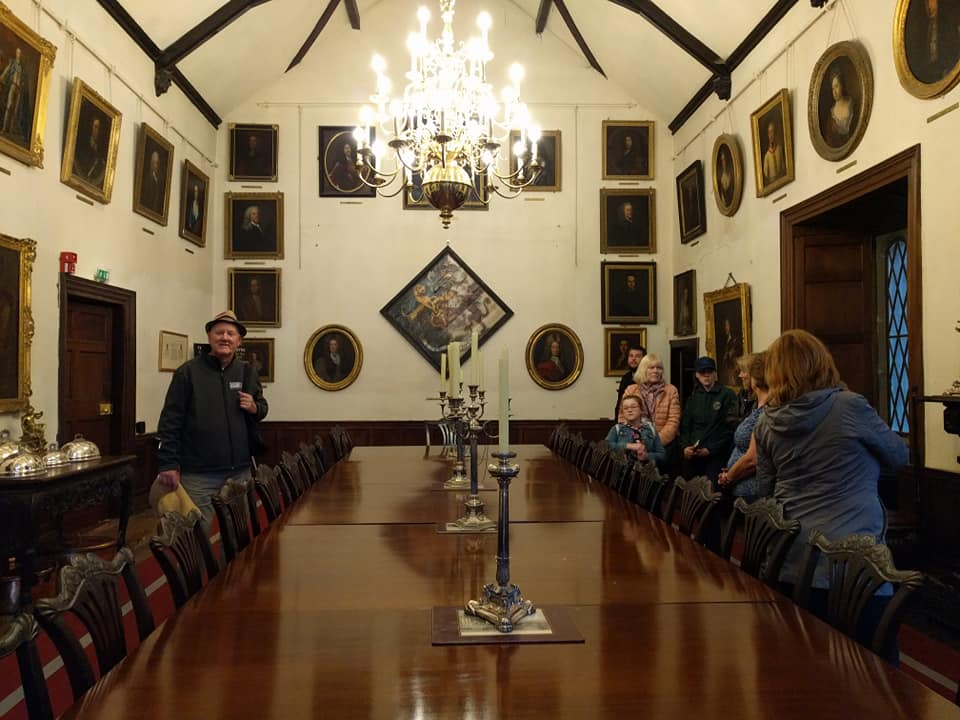
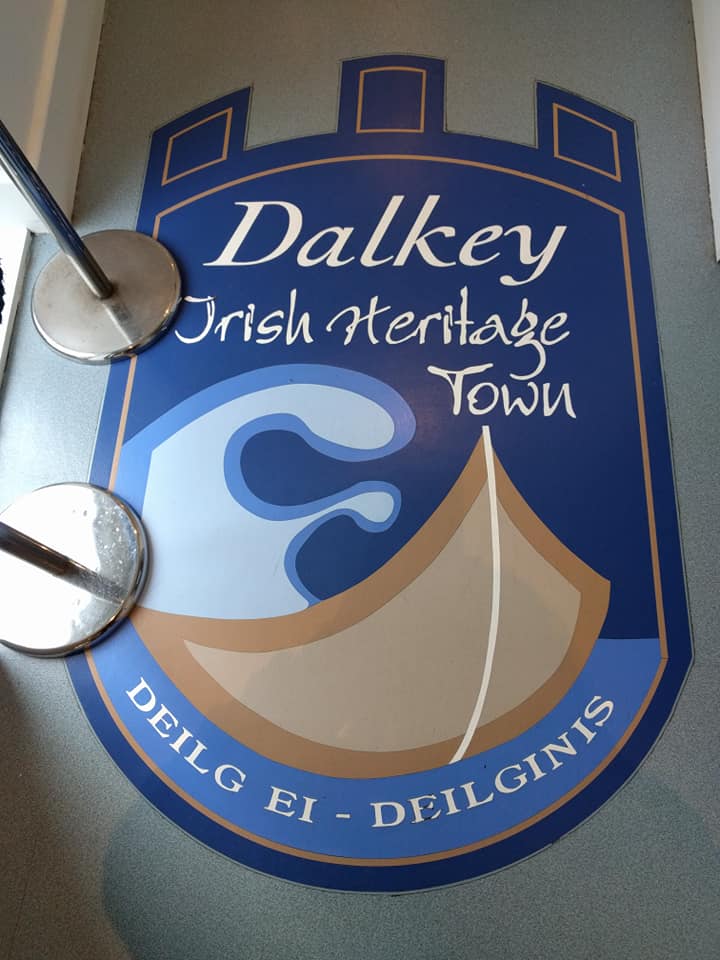
Southbound on DART, we reached Dalkey, one of only two heritage towns in Ireland. Dalkey was absolutely amazing, full of history and old world charm.
The Dame of Dalkey Castle was so in character and the docents were so realistic. Walter was allowed by the archer to assist in defending the castle, but he, unfortunately, fouled up and got punished.
The City of Dublin is divided by the Liffey River . You can go from one part of town to another by crossing the Ha’Penny Bridge. This bridge replaced the ferry service that once upon a time brought goods and people across the river. For 100 years, bridge pedestrians were charged half a penny to pay for the its construction.
When in Dublin, you will see road signs on the ground carved on stone or cast in metal. It is a puzzle to me. Visit the Temple Bar District, see the Cliffs of Moher, drink and dine at the many unique bars and pubs, challenge Strongbow to a duel at Dublinia and hopefully, unlike Walter, escape capture and win the battle.
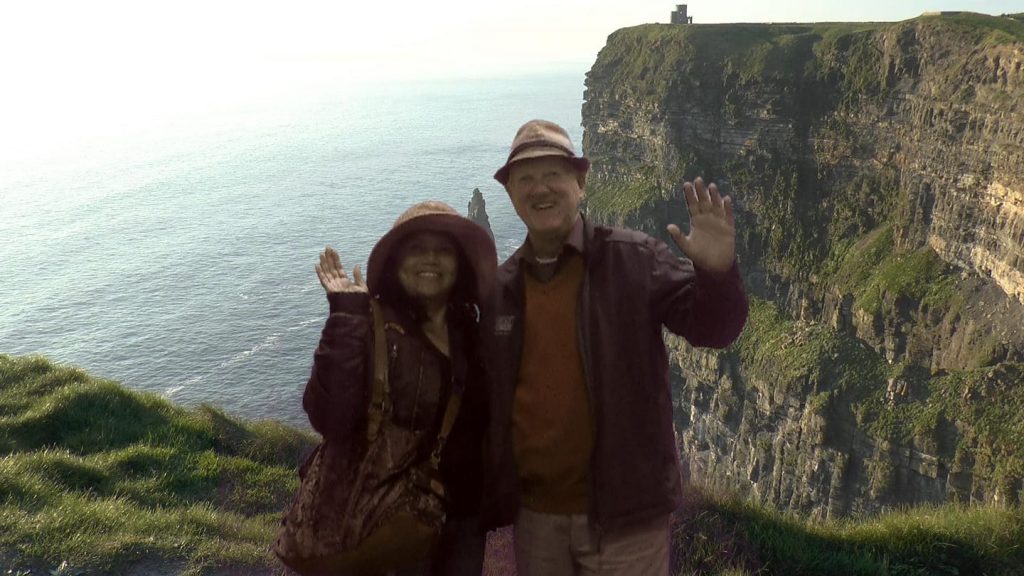
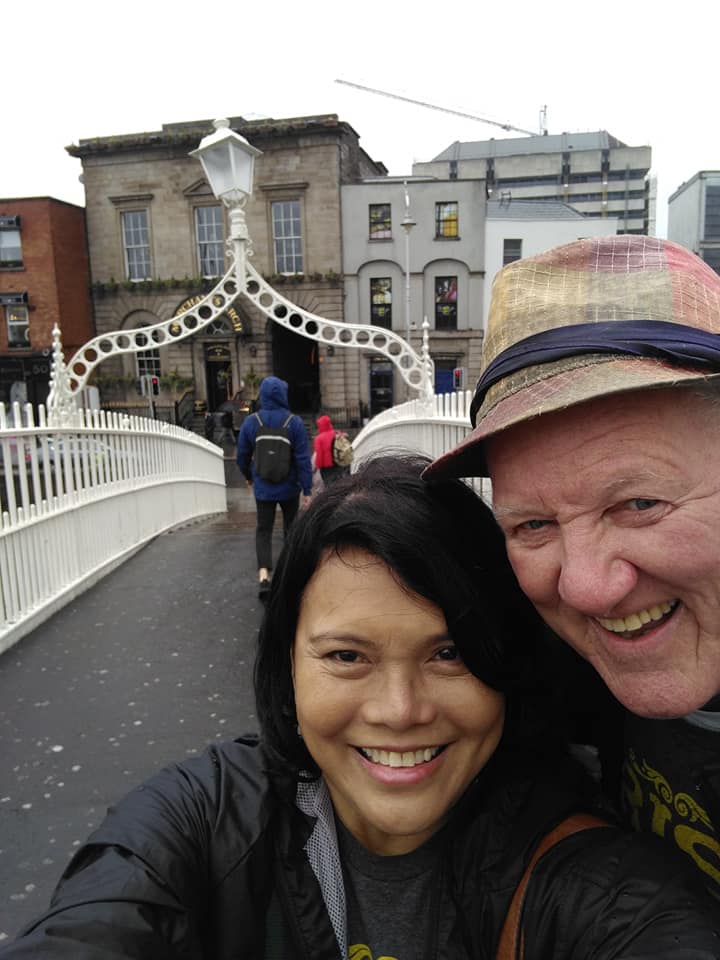
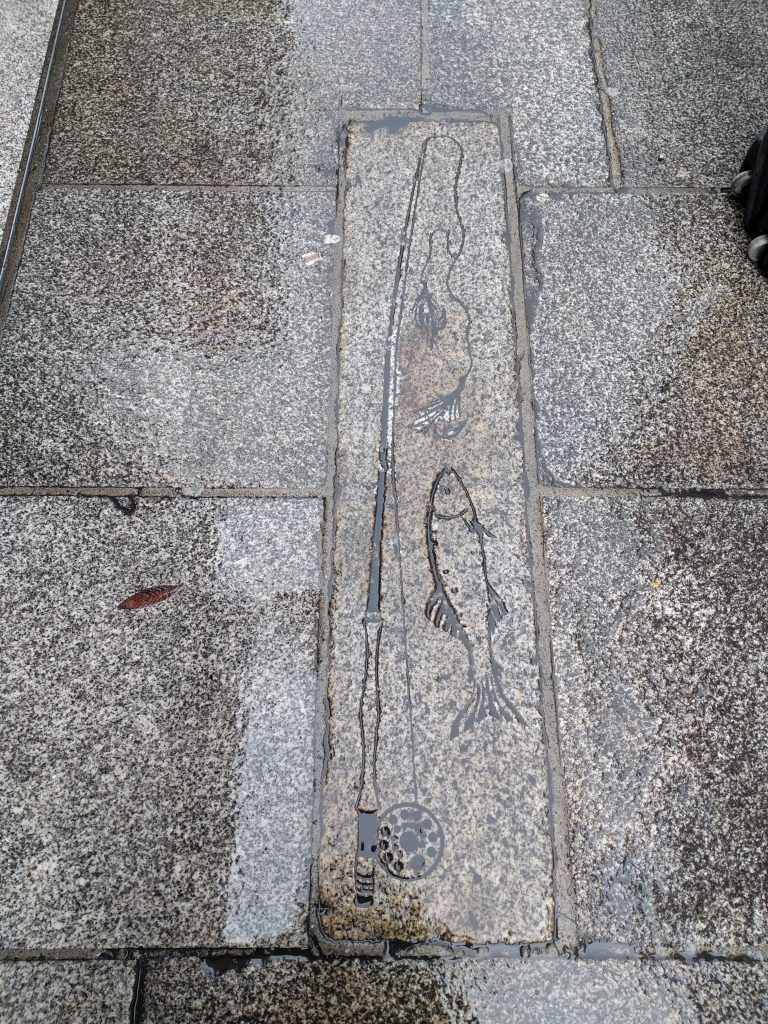
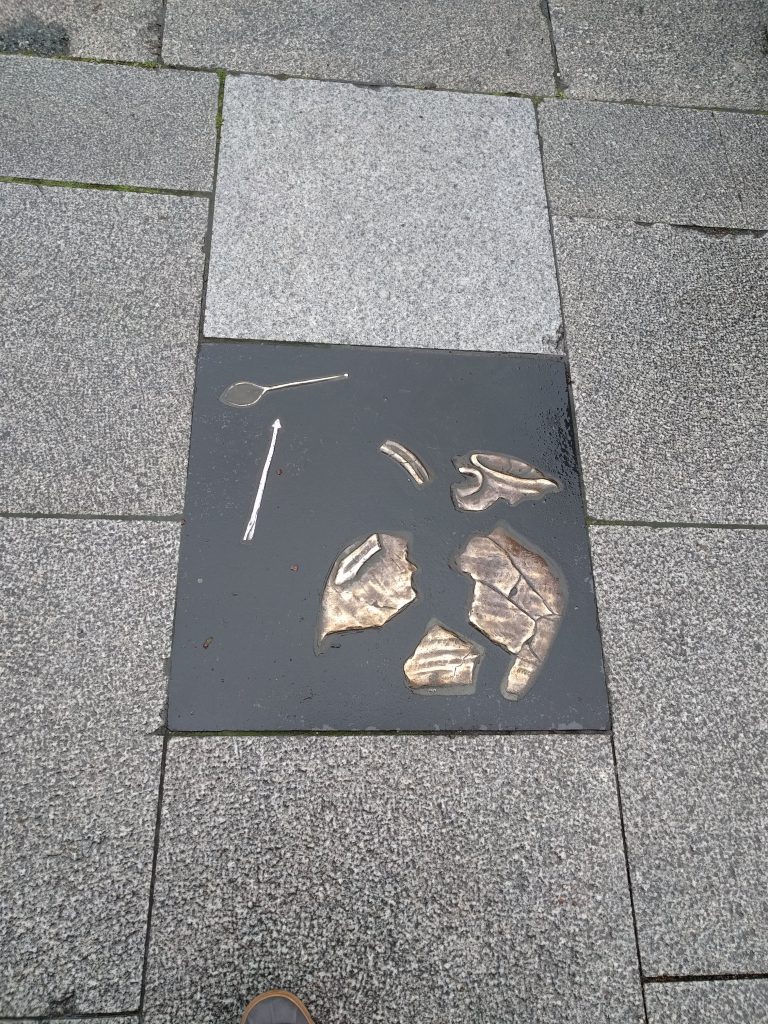
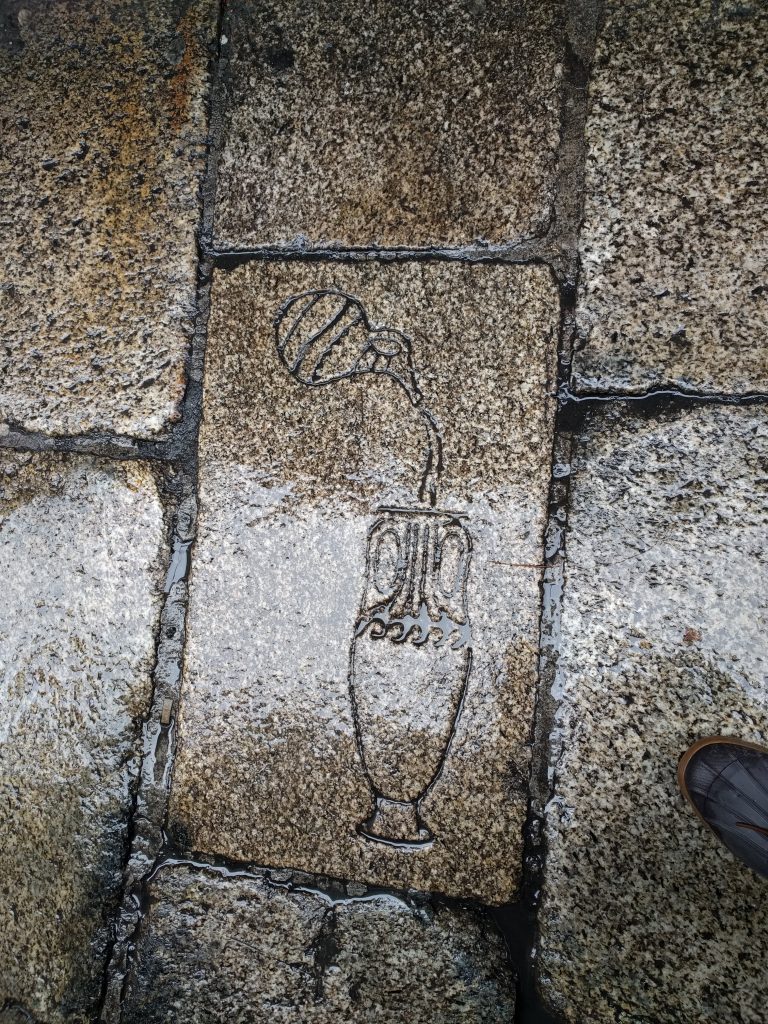
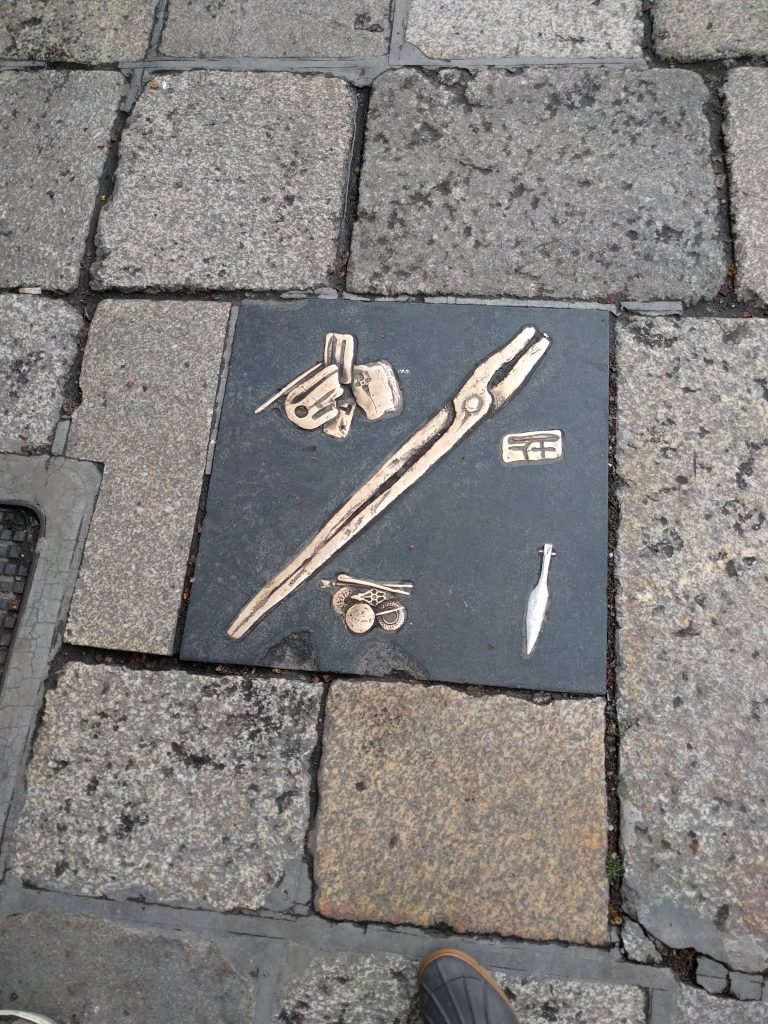
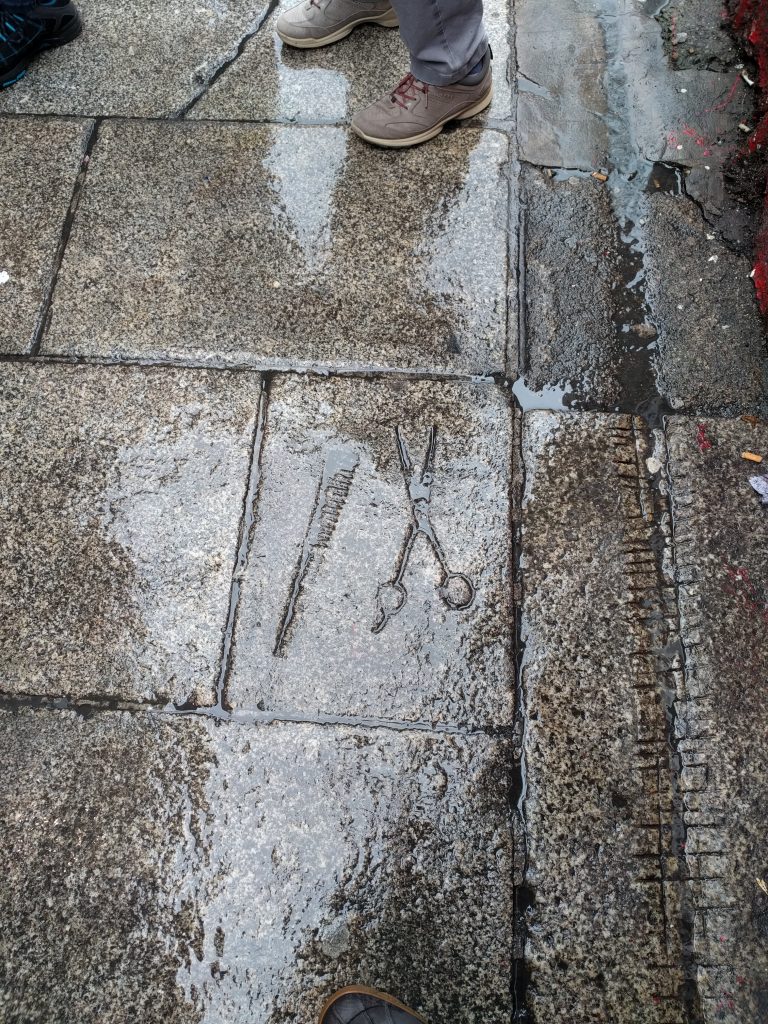
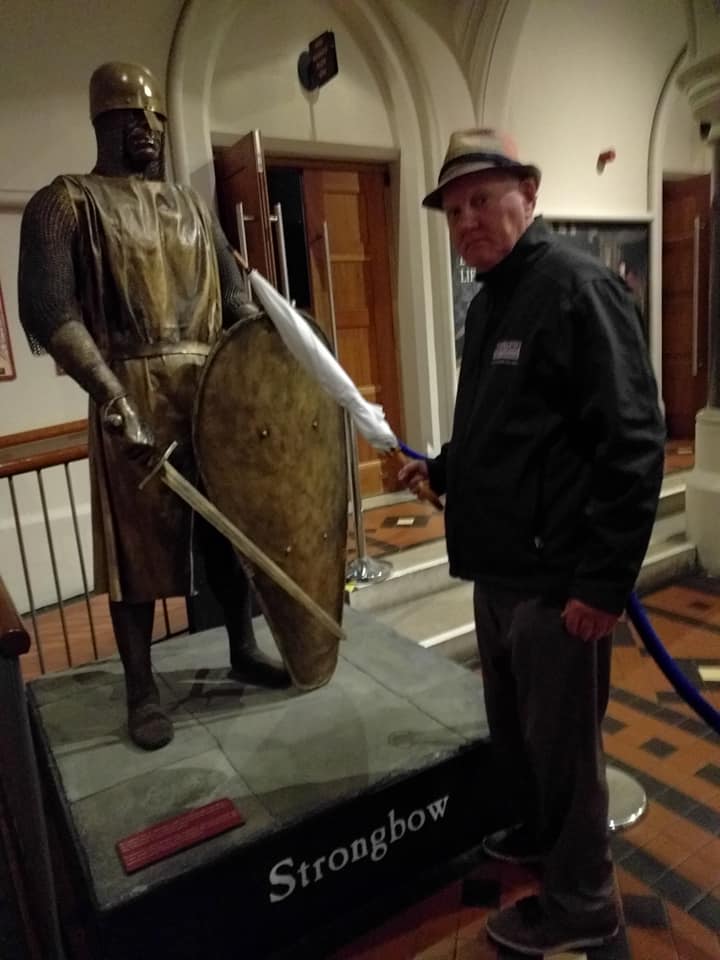
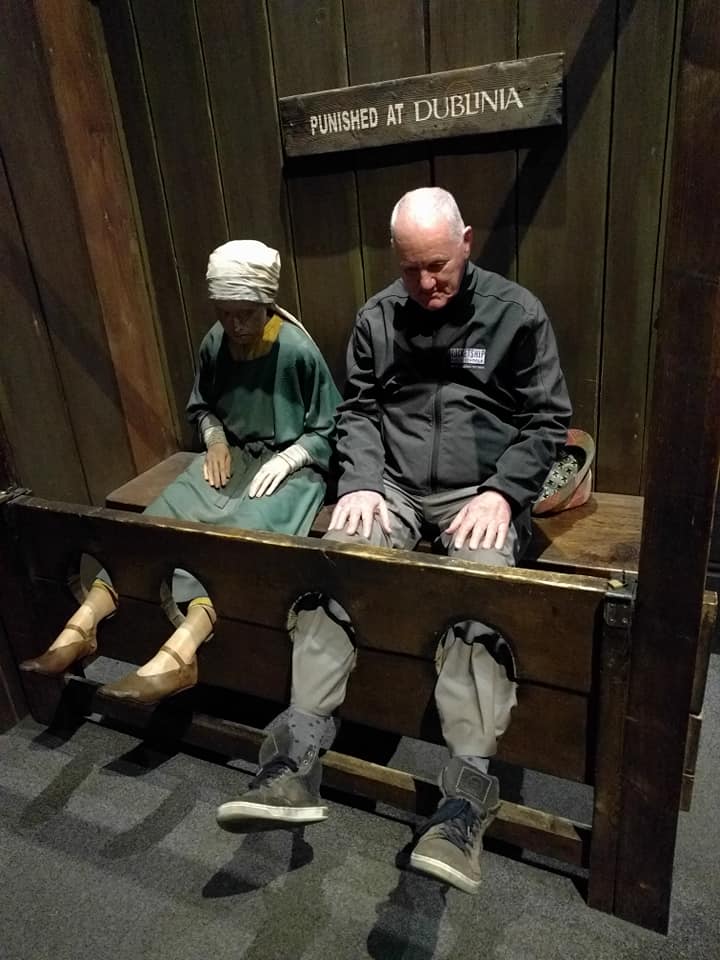
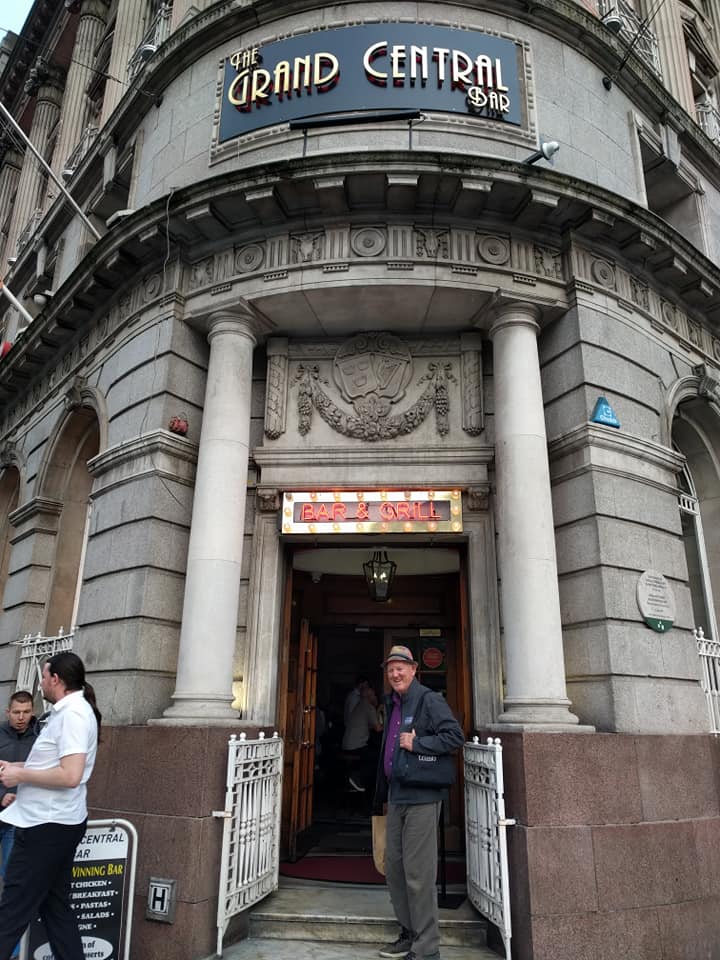
—-boasts bullet holes from the Irish Spring—
Ireland’s unique story of struggle for the most basic of human needs to be free as a nation nourished its imagination and spirit. This small country of only 5.5 million people produced an abundance of the world’s greatest writers and poets.
I especially love the simplicity of this 9th century poem written by an unknown Irish monk. Read it out loud and let Celtic images flutter in your head.
Pangur Ban
I and Pangur Ban my cat
‘Tis a like task we are at;
Hunting mice is his delight
Hunting words I sit all night.
Better far than praise of men
‘Tis to sit with book and pen;
Pangur bears me no ill will
He too plies his simple skill.
Oftentimes a mouse will stray
In the hero Pangar’s way;
Oftentimes my keen thought set
Takes a meaning in its net.
“Gainst the wall he sets his eye
Full and fierce and sharp and sly;
‘Gainst the wall of knowledge I
All my listen wisdom cry.
Practice every day has made
Pangar perfect in his trade;
I get wisdom day and night
Turning darkness into light.
Click here for more adventures.
